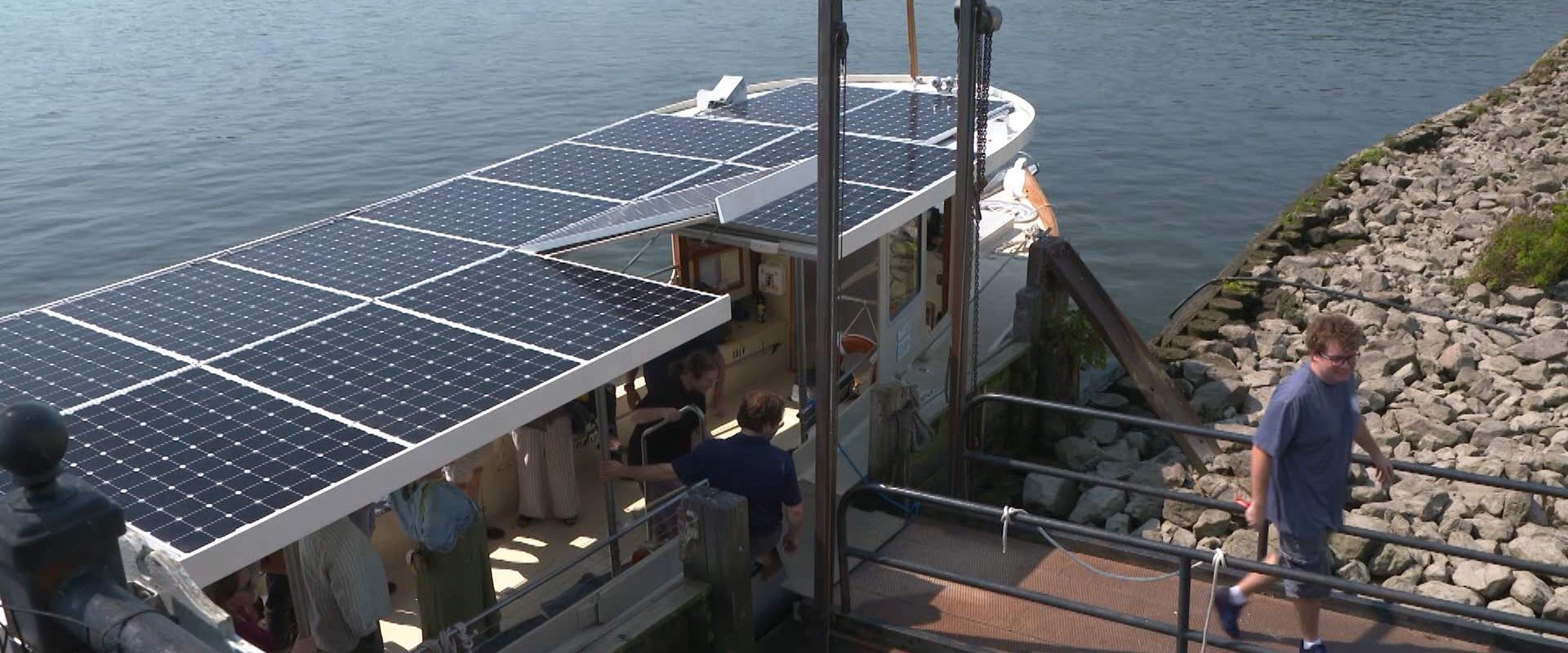Clean Marine Alternatives
Eco-friendly motoring is a universal goal for manufacturers these days, but it’s not limited to those who build cars, trucks and buses. We’ve recently encountered a few clean marine transportation projects, so come along and catch a ride to the future of green boating.
One in ten U.S. households owns a recreational boat, and there are about 13 million registered boats in use. Unlike the car industry, where the same company usually makes the vehicle and the engine, marine power is more of an à la carte arrangement, especially with outboards.
So, when it comes to environmental issues, the onus for green innovation generally falls on the engine suppliers, not the boat makers.

MARTIN PETERS: In the marine industry, the replacement rate for boats is about 1.7% per year. That means it would take 40 years to replace every boat on the water. If we introduce fuels that are even 30% more carbon neutral than ethanol fuel is right now, we can start to decarbonize the fleet immediately.
JOHN DAVIS: At the recent Miami Boat Show, Yamaha caught everyone’s attention with a 450-horsepower, hydrogen-fueled outboard engine mounted onto a popular boat chassis with fully-integrated hydrogen storage and fuel delivery system engineered by Roush.
MARTIN PETERS: We’re also pursuing sustainable fuels, and electrification at the lower horsepower level.
JOHN DAVIS: Yamaha is not alone in seeing the promise of hydrogen for marine use. Weekend visitors to San Francisco can take a free 10-minute journey from downtown to Fisherman’s Wharf aboard the Sea Change, the world’s first commercial passenger ferry powered 100% by zero-emission hydrogen fuel cells. It runs a dozen routes every weekend, and tops off its 246 kilos of gaseous hydrogen once a week.
The 75-passenger vessel emits only water vapor, and guests can taste it for themselves! The onboard water fountain dispenses re-mineralized water sourced from the ship’s fuel cell emissions.
The Sea Change trial is a proof-of-concept project for now, but San Francisco’s ferry system is heavily used by tourists and commuters alike, so a future switch to green h2 would have a hugely positive environmental impact.
SEAMUS NOLAN: So, I think in terms of looking at a hydrogen future, you have to look at both the demand and the supply side, that at this point both need to be developed together. You see the hydrogen hubs that are funded by the department of energy. These hydrogen hubs serve as an opportunity to accelerate and de-risk a lot of the investment associated with building out both supply and demand of green hydrogen.
JOHN DAVIS: At the other end of the country, visitors to the Hudson River Maritime Museum can take a relaxing cruise aboard the Solaris, the first fully solar-powered boat certified by the Coast Guard to carry passengers.

LISA CLINE: You know, you don’t have to yell over anything. We use her as a floating classroom. We teach history on the boat, we teach environmental… Kids love being on the boat. It’s very welcoming, it’s not scary, it’s close to the water, and it’s quiet.
JOHN DAVIS: In fact, the loudest noise you’ll hear aboard the Solaris is the air horn! Built on-site at the museum, the classic look of the Solaris is not just for nostalgia.
DAVID BURTON: We chose a hull design from a 1906 launch. Back then, boats had to have very efficient hulls because the motors were heavy and very low power.
JOHN DAVIS: Solaris doesn’t need big power, though. Sixteen solar panels on the canopy provides free energy for an 80-kilowatt battery. Fully charged, Solaris can travel 50 miles at night at a top speed of around 8 miles-per-hour.
All of these clean marine efforts are what’s needed to reach greener waters over the horizon.








